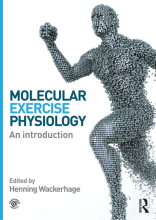Summary: Introduction To Human Immunology
- This + 400k other summaries
- A unique study and practice tool
- Never study anything twice again
- Get the grades you hope for
- 100% sure, 100% understanding
Read the summary and the most important questions on Introduction to Human Immunology
-
Lecture 2, Ch 2,3
This is a preview. There are 28 more flashcards available for chapter 16/03/2021
Show more cards here -
Where is the complement for the alternative pathway produced and how is it called?
C3 molecule is formed in the liver -
What is happening with C3 in the alternative pathway?
C3 is constantly made and also constantly falls appart. It splits in C3a and C3b al the time. -
What happens with C3b in the alternative pathway when the body is healthy?
It is broken down by the body within 60milliseconds . -
What happens with the C3b molecule of the alternative pathway when there is an unhealthy bacterium?
C3b binds to the unhealthy bacterium (within 60 millisec) and emediatly there is a B molecule bound. Then factor D is activated and molecule B is transformed to Bb. ThisC3bBb complex can chainsaw otherC3 molecules to make moreC3b . This is a process with positive feedback and many will bind to the bacterium. When aC3bBb complex bind to aC3b molecule.C5,6,7,8 and 9 can be activated. This will form a mambrane attack complex (MAC) wich will destroy the cell. -
What is the lectin patway of activation?
There is a Mannose binding lectin (MBL) produced by the liver. This can bind to mannose which is present in a lot of invaders. MBL binds with MASP in the blood and when this complex binds to the invader MASP can cleave C3 into C3b. Then the same cascade as with alternative pathway. -
What are the other actions of complements?
1. A part of the C3b proteins bound to an invader can be cleaved into iC3b these are there for binding of phagosyted to the invader.
2. C3b/C5b are involved in the positive feedback and MAC
3. C3a/C5a are chemo-attractants called anaphylatoxins. They attract macrophages. -
Lecture 1, Ch 1
This is a preview. There are 33 more flashcards available for chapter 16/03/2021
Show more cards here -
What are the physical barriers
1.Skin
2.Mucous membramnes (digestive, respiratory and reproductive tract) -
How does the physical barrier protect us?
1. Large surface
2. Tight junctions
3. Mucosal layer with antibacterial peptides -
What cells are part of the innate immune system
Dendriticcells
Macrophages
Neutrophil
Eosinophil
Mast cell
Megakaryocyte
red blood cell (erythrocyte) -
How does a magrophage work?
The magrophage detects a bacteria and eats it, it comes in a phagosome. The phagosome fuses with a lysosome and the bacteria is broken down.
- Higher grades + faster learning
- Never study anything twice
- 100% sure, 100% understanding






























